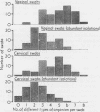Abstract
The microbial flora of the vagina and cervix was assessed qualitatively and semiquantitatively in 40 women attending an intrauterine contraceptive device clinic. Both sites harboured many types of macroorganism, the mean number of microbial types isolated being five from the vagina and four from the cervix. Typical lactobacilli were detected in 61% of vaginal and in 53% of cervical specimens; faecal bacteria, including anaerobes, were even more frequently found at both sites. No differences in the microbial populations at either the vagina or the cervix were detected after fitting of the devices, in the different weeks of the menstrual cycle, or with various previously used contraceptive methods.
Full text
PDF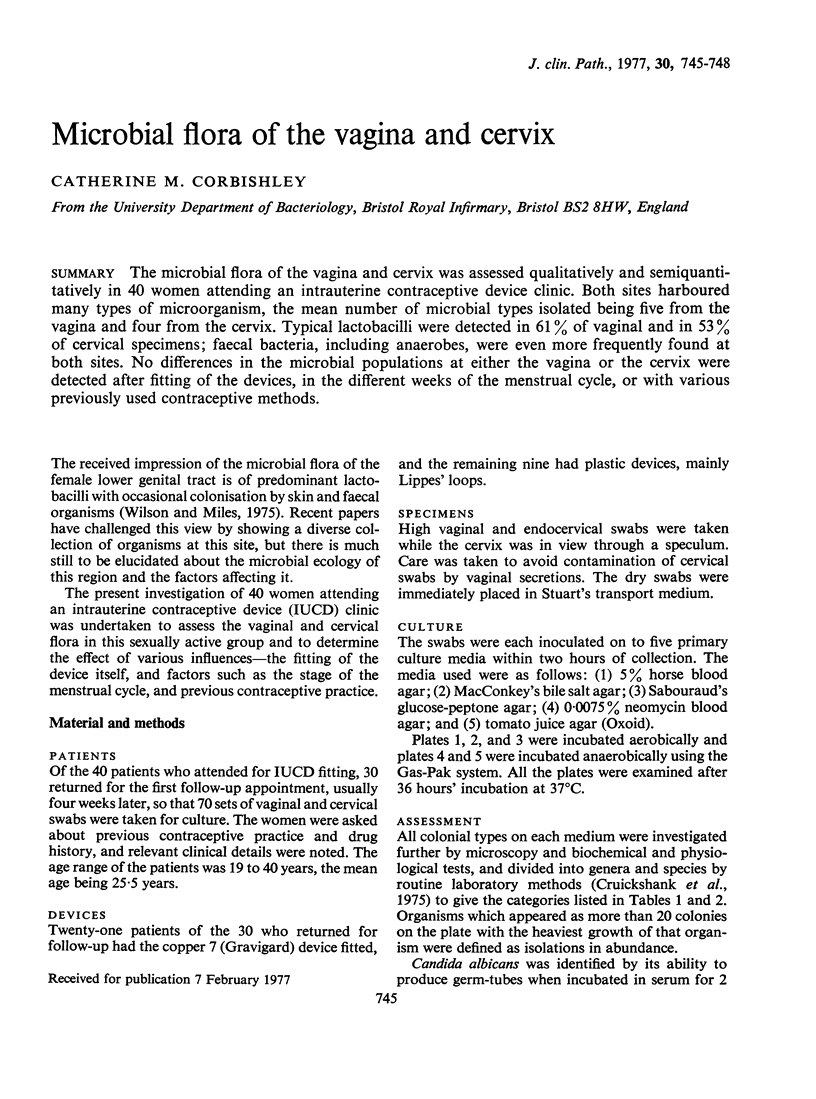
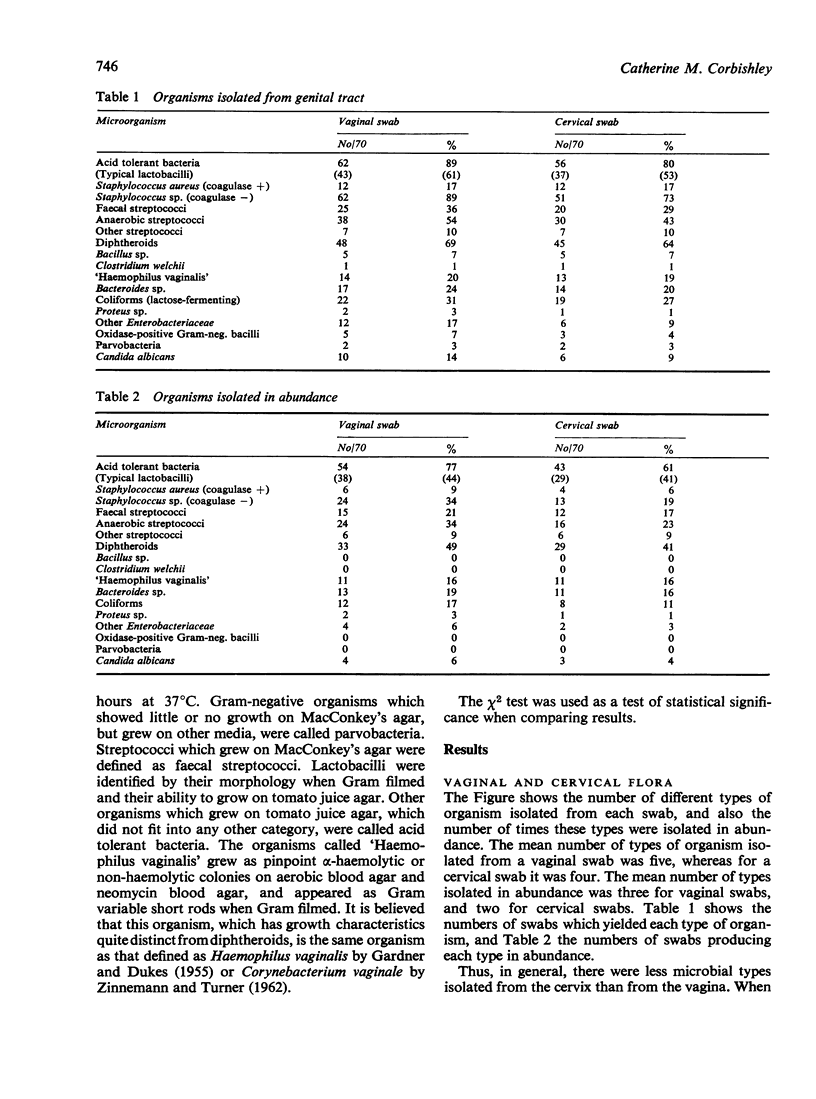
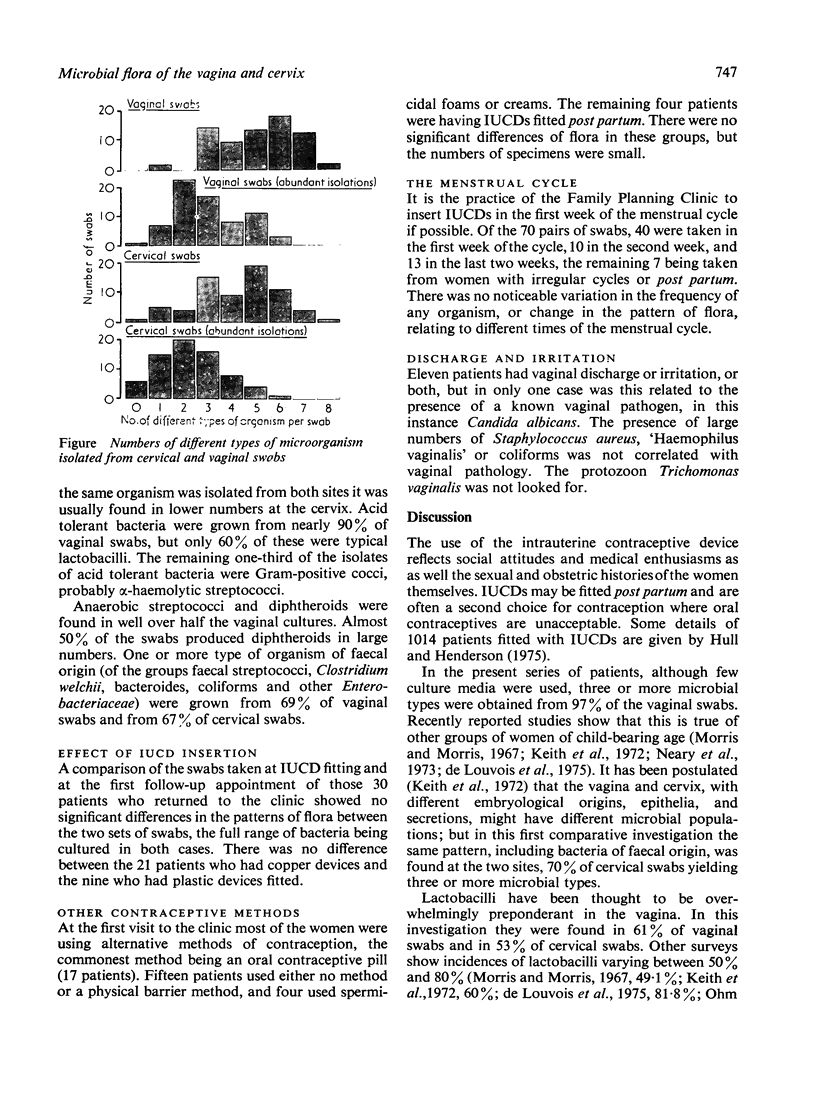
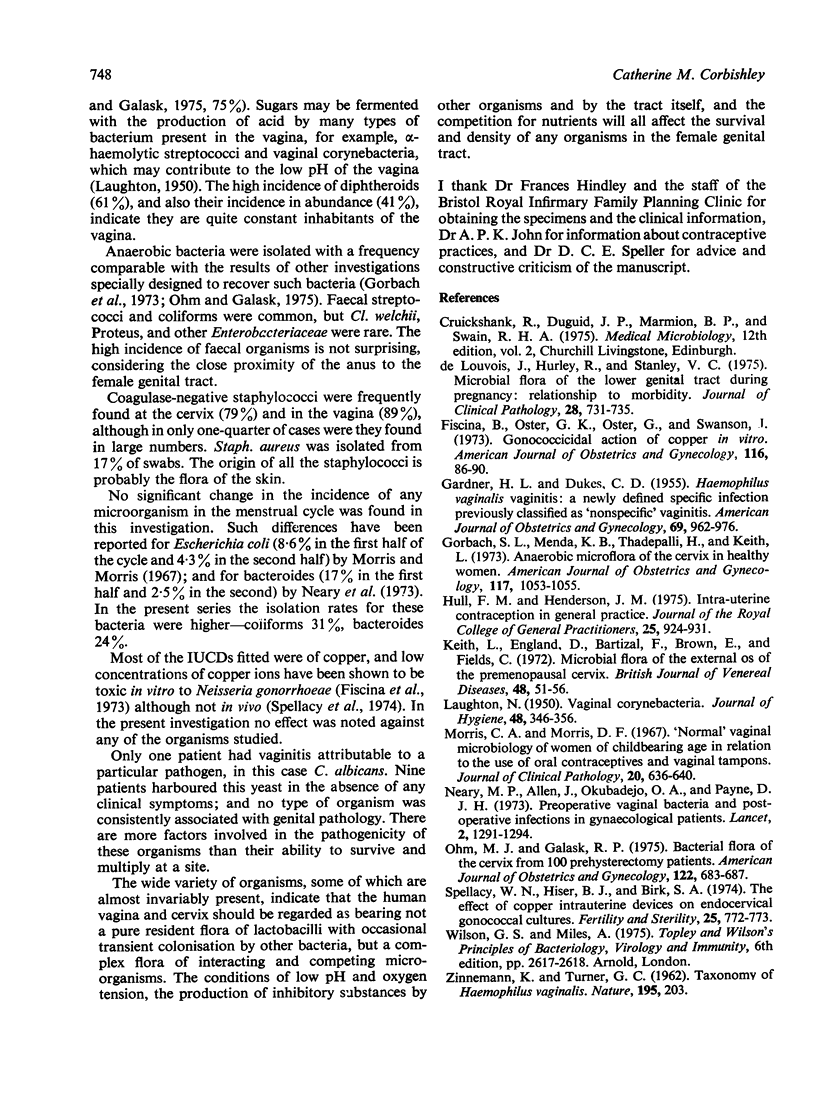
Images in this article
Selected References
These references are in PubMed. This may not be the complete list of references from this article.
- Fiscina B., Oster G. K., Oster G., Swanson J. Gonococcicidal action of capper in vitro. Am J Obstet Gynecol. 1973 May 1;116(1):86–90. doi: 10.1016/0002-9378(73)90889-2. [DOI] [PubMed] [Google Scholar]
- GARDNER H. L., DUKES C. D. Haemophilus vaginalis vaginitis: a newly defined specific infection previously classified non-specific vaginitis. Am J Obstet Gynecol. 1955 May;69(5):962–976. [PubMed] [Google Scholar]
- Gorbach S. L., Menda K. B., Thadepalli H., Keith L. Anaerobic microflora of the cervix in healthy women. Am J Obstet Gynecol. 1973 Dec 15;117(8):1053–1055. doi: 10.1016/0002-9378(73)90753-9. [DOI] [PubMed] [Google Scholar]
- Hull F. M., Henderson J. M. Intra-uterine contraception in general practice. J R Coll Gen Pract. 1975 Dec;25(161):924–931. [PMC free article] [PubMed] [Google Scholar]
- Keith L., England D., Bartizal F., Brown E., Fields C. Microbial flora of the external os of the premenopausal cervix. Br J Vener Dis. 1972 Feb;48(1):51–56. doi: 10.1136/sti.48.1.51. [DOI] [PMC free article] [PubMed] [Google Scholar]
- Morris C. A., Morris D. F. Normal vaginal microbiology of women of childbearing age in relation to the use of oral contraceptives and vaginal tampons. J Clin Pathol. 1967 Jul;20(4):636–640. doi: 10.1136/jcp.20.4.636. [DOI] [PMC free article] [PubMed] [Google Scholar]
- Neary M. P., Allen J., Okubadejo O. A., Payne D. J. Preoperative vaginal bacteria and postoperative infections in gynaecological patients. Lancet. 1973 Dec 8;2(7841):1291–1294. doi: 10.1016/s0140-6736(73)92870-5. [DOI] [PubMed] [Google Scholar]
- Ohm M. J., Galask R. P. Bacterial flora of the cervix from 100 prehysterectomy patients. Am J Obstet Gynecol. 1975 Jul 15;122(6):683–687. doi: 10.1016/0002-9378(75)90571-2. [DOI] [PubMed] [Google Scholar]
- Spellacy W. N., Hiser B. J., Birk S. A. The effect of copper intrauterine devices on endocervical gonococcal cultures. Fertil Steril. 1974 Sep;25(9):772–773. [PubMed] [Google Scholar]
- de Louvois J., Hurley R., Stanley V. C. Microbial flora of the lower genital tract during pregnancy: relationship to morbidity. J Clin Pathol. 1975 Sep;28(9):731–735. doi: 10.1136/jcp.28.9.731. [DOI] [PMC free article] [PubMed] [Google Scholar]



